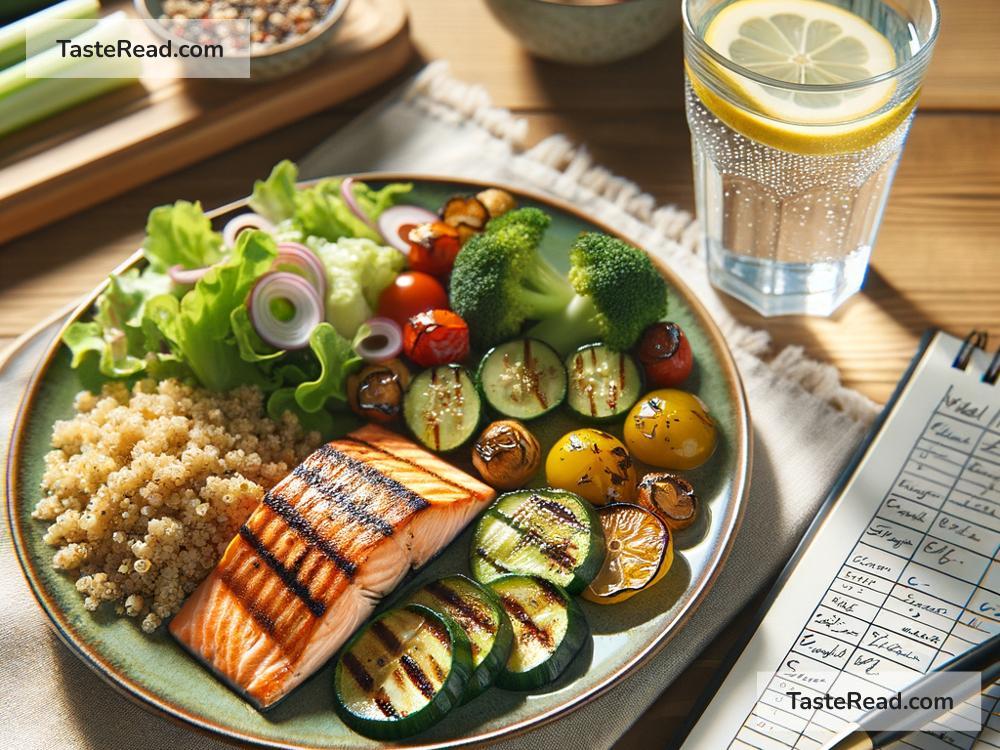How to Plan Meals for Optimal Nutrient Balance: A Beginner’s Guide
Many of us know that eating a balanced diet is important, but figuring out how to create meals that provide all the nutrients your body needs can be tricky. The good news? It’s not as complicated as you might think! With a little bit of planning and knowledge, you can enjoy delicious meals that fuel your body properly. In this article, we’ll walk you through how to plan meals for optimal nutrient balance in simple, straightforward steps.
Why is Nutrient Balance So Important?
Your body is like a machine—it needs a variety of nutrients to function well. Nutrients are divided into two main groups:
-
Macronutrients: These include carbohydrates, proteins, and fats, which your body needs in large amounts for energy and growth.
-
Micronutrients: These are vitamins and minerals (like Vitamin C, iron, and calcium) that your body needs in smaller amounts for proper functioning.
When your meals include a good mix of macronutrients and micronutrients, you give your body the tools it needs to stay healthy, energized, and strong.
How to Create Nutrient-Balanced Meals
Here’s a simple, step-by-step guide to help you plan meals that cover all your nutritional bases:
1. Start with a Healthy Plate Model
One way to visualize nutrient balance is to imagine your plate divided into sections. An easy rule of thumb is:
- 50% vegetables and fruits: Fill half your plate with colorful produce like spinach, carrots, tomatoes, apples, or berries. These provide essential vitamins, minerals, and fiber.
- 25% lean protein: Include sources like chicken, fish, eggs, beans, tofu, or lentils. Protein helps build and repair muscles while keeping you full longer.
- 25% whole grains or starchy foods: Add whole grains like brown rice, quinoa, oats, or sweet potatoes for energy.
This “healthy plate model” makes it easier to create meals without worrying about exact nutrient calculations.
2. Include All Macronutrients
Each meal should contain a balance of carbohydrates, fats, and protein. Here’s a breakdown of why each is important:
- Carbohydrates: Your body’s main source of energy. Choose complex carbs like whole grains, legumes, or vegetables instead of sugary snacks or refined grains.
- Protein: Helps your body repair and grow tissues. Good sources of protein include meat, fish, dairy, tofu, nuts, and seeds.
- Healthy fats: Not all fat is bad! Healthy options like olive oil, avocados, and nuts are essential for brain function and hormone regulation.
Skipping one of these macronutrients can lead to energy drops or nutrient deficiencies.
3. Add Micronutrients
Once you’ve got your macronutrient bases covered, it’s time to focus on micronutrients. Here’s how to include them:
- Eat the rainbow: Different vegetables and fruits contain different vitamins and minerals, so aim for variety. For instance, oranges are rich in Vitamin C, while spinach is high in iron and magnesium.
- Choose fortified foods: Some everyday items, like breakfast cereals or plant-based milks, are fortified with vitamins like B12 or Vitamin D.
- Don’t forget dairy or dairy alternatives: For calcium and Vitamin D, include options like yogurt, milk, or almond milk.
4. Portion Sizes Matter
Even the healthiest meal can become unbalanced if the portions aren’t right. Eating too much or too little of any food group can throw off your nutrient intake. Follow these simple tips:
- Protein: A serving of protein is roughly the size of your palm.
- Carbs: About one cupped handful for grains or starchy veggies like potatoes.
- Fats: Stick to about the size of your thumb for oils or butter.
You don’t have to measure everything exactly—just aim to keep portions reasonable.
5. Plan for Snacks
Snacks can be a great opportunity to sneak in extra nutrients. Instead of reaching for chips or cookies, try these ideas:
- Greek yogurt with fresh fruit (for protein and fiber).
- Veggie sticks with hummus (for healthy fats and vitamins).
- A handful of nuts (for essential minerals like magnesium).
This way, even your snacks contribute to your overall nutrient balance.
6. Stay Hydrated
Water isn’t technically a nutrient, but it’s vital for your body’s functions. Many people forget that hydration plays a role in digestion and nutrient absorption. Carry a water bottle and aim for 8–10 glasses a day. Herbal teas, flavored water, or even nutrient-rich broths can help you stay hydrated.
7. Customize to Your Needs
Everyone’s nutritional needs are different based on age, gender, activity level, and health conditions. For example:
- Active individuals may need extra carbs for energy.
- Older adults may benefit from more calcium-rich foods to support bone health.
- Vegans should eat plenty of iron, B12, and zinc-rich foods.
If you’re unsure about your specific needs, consult a dietitian for personalized advice.
Meal Planning Tips
Here are a few tricks to make nutrient-balanced meal planning easier:
- Plan ahead: Write a grocery list for the week based on balanced recipes you love.
- Cook in batches: Prepare meals in bulk and freeze them to save time later.
- Experiment: Try out new foods or cuisines to keep your meals exciting and avoid monotony.
Wrapping Up
Planning meals for optimal nutrient balance doesn’t have to be hard or overwhelming. By focusing on variety, portion sizes, and including all macronutrients and micronutrients, you can create meals that nourish your body and keep you feeling your best. Remember, it’s okay to start small—make gradual changes to your eating habits, and soon, balanced eating will become second nature. Happy meal planning!


